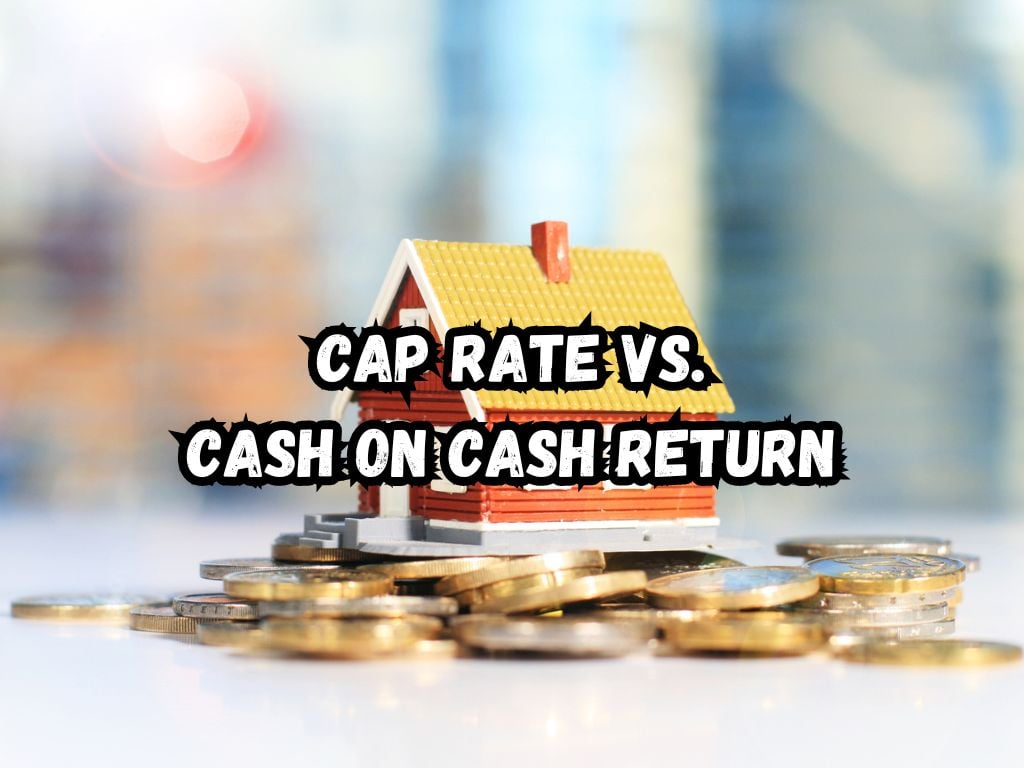Investors are often bombarded with an array of metrics while navigating the real estate arena. Two pivotal terms that frequently emerge are cap rate vs cash on cash Return.
Understanding these concepts is crucial for making informed decisions. They help investors gauge the profitability and potential of investment properties.
Understanding Cap Rate
Cap Rate, or capitalization rate, is a metric used to estimate the return on an investment property. It relates the income a property generates to its purchase price.
To calculate Cap Rate, you divide the Net Operating Income (NOI) by the current market value of the property.
Net Operating Income is the total income from a property minus the operating expenses. It does not include any financing costs. This is where Cap Rate’s strength lies. It offers an unbiased figure that reflects an asset’s performance.
However, Cap Rate does have limitations. It doesn’t factor in financing or future cash flows from property improvements. When used on its own, Cap Rate may not offer a complete financial picture.
Investors favor Cap Rate for quick comparisons between properties. It’s particularly useful in a market with many similar investment opportunities.

Understanding Cash on Cash Return
Cash on Cash Return measures the cash income earned on the cash invested in a property. It is expressed as a percentage. The formula involves dividing the annual pre-tax cash flow by the total cash invested.
This metric is sensitive to the method of financing used to purchase the property. Unlike Cap Rate, it considers the investment’s financing structure.
For investors using mortgage loans, Cash on Cash Return is a vital metric. It illuminates the performance of the cash they’ve directly invested.
However, just like Cap Rate, the Cash on Cash Return is not without its downsides. It does not account for potential increases in income or operating costs. Such changes can affect an investment’s performance over time.
Despite its limitations, cash on cash return remains a key performance indicator. This is especially true when comparing different financing options for a property.
Cap Rate vs Cash on Cash Return: A Comparative Analysis
Cap Rate and Cash on Cash Return serve different purposes. They should be used in tandem for a well-rounded analysis. Cap Rate shines in offering an unbiased look at the potential return of an investment.
It is the option when you want a quick snapshot. One that isn’t clouded by the variables of financing and tax implications.
Cash on Cash Return steps in where Cap Rate falls silent. It gives investors insights into the actual return on their out-of-pocket expenses. It lays out the effect that leverage has on an investment.
Understanding both allows investors to navigate the financing landscape effectively. Both metrics have their place in your decision-making toolkit.
How to Maximize Your Investments Using These Metrics
For beginners in real estate investment, these metrics are invaluable tools. They help assess potential investments and avoid costly mistakes.
Investors should ensure they perform due diligence. This includes accurate estimations of Net Operating Income and paying attention to market trends.
It’s easy to fall into traps with these metrics. One common pitfall is not considering changing market conditions. Both Cap Rate and Cash on Cash Return are static metrics.
They don’t predict changes in property value or rent amounts. Investors should bear in mind that these figures are snapshots of the present.

Case Studies
Consider an investor choosing between two properties. One shows a higher Cap Rate, while the other, a better Cash on Cash Return due to favorable financing.
A thorough analysis would reveal the best choice, accounting for both factors.
In practice, successful real estate investors often look back on deals citing these metrics. They acknowledge that a keen eye on Cap Rate laid down the baseline for profit potential.
They also recognize that understanding Cash on Cash Return forecasted the actual cash gains.
Frequently Asked Questions
What is a Good Cap Rate?
A Good Cap Rate varies by market and property type. Generally speaking, a Cap Rate between 5% and 10% can be considered favorable. Though, it’s vital to align expectations with specific investment goals and regional market conditions.
What is an Excellent Cash on Cash Return?
An Excellent Cash on Cash Return might range above 8%. However, like Cap Rate, this threshold depends on the context of the investment and the level of risk involved.
Can You Use Both Metrics Together?
Absolutely. Using both metrics together provides a comprehensive view of an investment’s profitability and the impact of financing.
Conclusion
Cap Rate and Cash on Cash Return are fundamental metrics in real estate investment. They serve different purposes and are most effective when used in concert.
By understanding both, investors can make more calculated and savvy investment choices. These metrics are not the be-all and end-all of investment analysis, but they are essential tools in the investor’s toolkit.


 Tags:
Tags:










